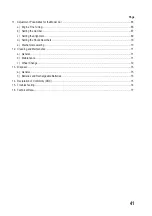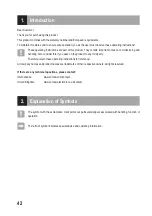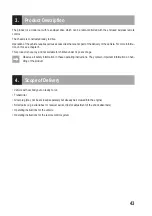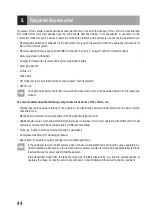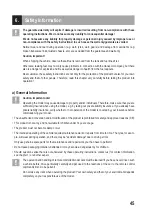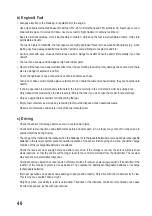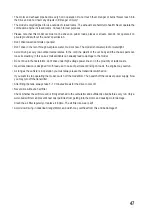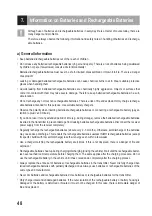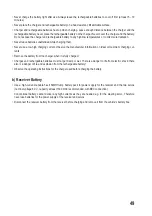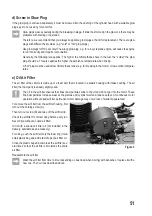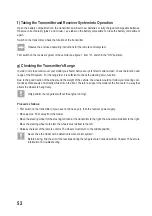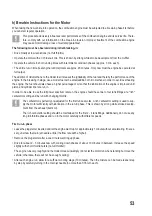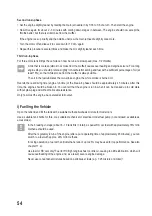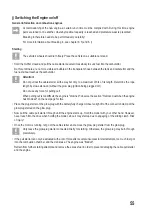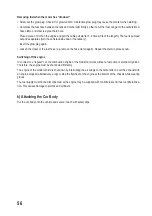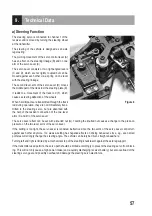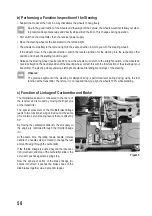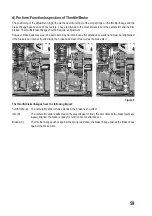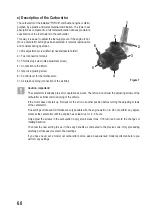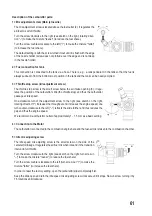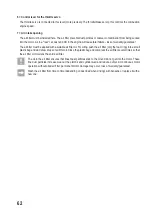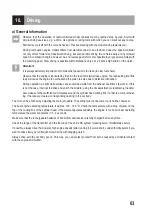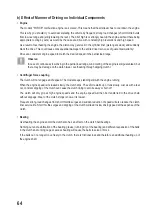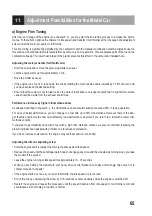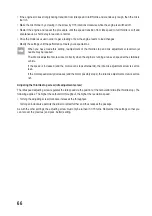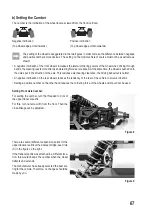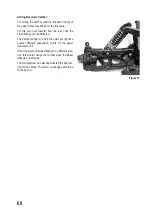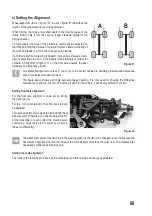
54
Second run-in phase
• Set the engine slightly leaner by twisting the main jet needle in by 1/16 to 1/8 of a turn. Then start the engine.
• Now drive again for about 2 - 3 minutes with cooling down stages in between. The engine should now accept the
throttle better, but there is still smoke from the muffler.
If the engine revs up briefly and then stalls, unscrew the main jet needle slightly once more.
• Turn the motor off and leave it to cool down for 10 min. again.
• Repeat this procedure several times and make the mix slightly leaner each time.
Third run-in phase
For three more tank fillings the vehicle can now be run at a slow speed (max. 1/2 throttle).
A mix that is too lean (almost no smoke from the muffler) causes overheating and engine seizure. For a long
engine life you should prefer a slightly rich carburettor setting and fuel with a sufficient percentage of oil (at
least 16%), so that white smoke from the muffler is always visible.
The oil in the fuel lubricates the two-stroke engine; the white smoke is burned oil.
Overall, the real driving time (engine run time) of the break-in phase should be approximately 45 minutes. After this
time, the engine should be broken in. You can tell that the engine is run in when it can be cranked up in cold state
without glow plug and without noticeable resistance.
Only now must the engine be operated at full output.
i) Fuelling the Vehicle
Open the tank lid and fill the tank with a suitable methanol/oil-basis mixture for model cars.
Use a suitable tank bottle for this, or a suitable mechanical or electrical model fuel pump (not enclosed, available as
accessories).
In the breaking-in stage (about 6 - 10 tank fills in total), a special RC car fuel with approximately 16% nitro
methane should be used.
After the regulatory run-in of the engine (after a pure operating time of approximately 45 minutes), you can
switch to a fuel with approx. 20% nitro methane.
In racing operation, a fuel with a nitromethane ratio of up to 25% may be used for top performance. See also
chapter 11. a).
Use fuel for RC cars only! Fuel for RC flight engines has too little oil, causing too little lubrication, which will
cause overheating of the engine and, as a result, severe engine damage.
Never use conventional mixtures based on petrol/super fuels (e.g. 1:25 mixture or similar)!
Summary of Contents for 1456608
Page 154: ...154 ...
Page 155: ...155 ...


